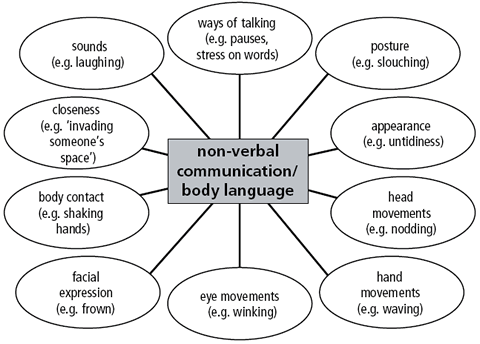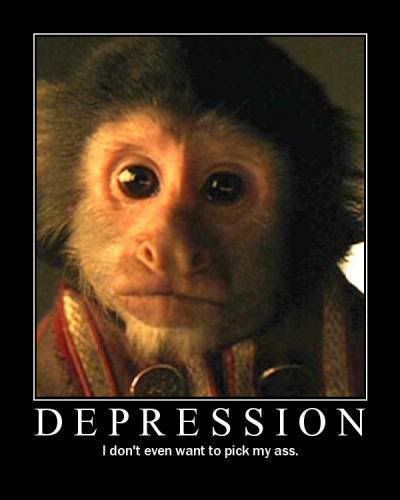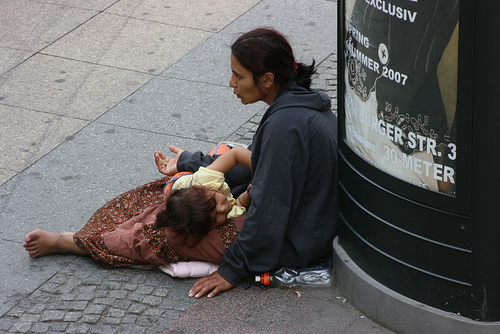Understanding body language
The technique of 'reading' people is used frequently. For example, the idea of mirroring body language to put people at ease is commonly used in interviews. It sets the person being interviewed at ease. Mirroring the body language of someone else indicates that they are understood.
Body language signals may have a goal other than communication. Both people would keep this in mind. Observers limit the weight they place on non-verbal cues. Signalers clarify their signals to indicate the biological origin of their actions.
- One of the most basic and powerful body-language signals is when a person crosses his or her arms across the chest. This can indicate that a person is putting up an unconscious barrier between themselves and others. It can also indicate that the person's arms are cold which would be clarified by rubbing the arms or huddling. When the overall situation is amicable, it can mean that a person is thinking deeply about what is being discussed. But in a serious or confrontational situation, it can mean that a person is expressing opposition. This is especially so if the person is leaning away from the speaker. A harsh or blank facial expression often indicates outright hostility.
- Consistent eye contact can indicate that a person is thinking positively of what the speaker is saying. It can also mean that the other person doesn't trust the speaker enough to "take his eyes off" the speaker. Lack of eye contact can indicate negativity. On the other hand, individuals with anxiety disorders are often unable to make eye contact without discomfort. Eye contact is often a secondary and misleading gesture because we are taught from an early age to make eye contact when speaking. If a person is looking at you but is making the arms-across-chest signal, the eye contact could be indicative that something is bothering the person, and that he wants to talk about it. Or if while making direct eye contact a person is fiddling with something, even while directly looking at you, it could indicate the attention is elsewhere. Also there are three standard areas that a person will look which represent different states of being. If the person looks from one eye to the other then to the forehead it is a sign that they are taking an authoritative position. If they move from one eye to the other then to the nose, that signals that they are engaging in what they consider to be a "level conversation" with neither party holding superiority. The last case is from one eye to the other and then down to the lips. This is a strong indication of romantic feelings.
- Disbelief is often indicated by averted gaze, or by touching the ear or scratching the chin. When a person is not being convinced by what someone is saying, the attention invariably wanders, and the eyes will stare away for an extended period.[1]
- Boredom is indicated by the head tilting to one side, or by the eyes looking straight at the speaker but becoming slightly unfocused. A head tilt may also indicate a sore neck or Amblyopia, and unfocused eyes may indicate ocular problems in the listener.
- Interest can be indicated through posture or extended eye contact.
- Deceit or the act of withholding information can sometimes be indicated by touching the face during conversation. Excessive blinking is a well-known indicator of someone who is lying.
It should be noted that some people (e.g., people with certain disabilities, or those on the autistic spectrum) use and understand body language differently, or not at all. Interpreting their gestures and facial expressions (or lack thereof) in the context of normal body language usually leads to misunderstandings and misinterpretations (especially if body language is given priority over spoken language). It should also be stated that people from different cultures can interpret body language in different ways.
Examples list
- Put your hands on your knees: indicates readiness.
- Put your hands on your hips: indicates impatience.
- Lock your hands behind your back: indicates self-control.
- Lock your hands behind your head: states superiority.
- Sitting putting a leg over the arm of the chair: suggests indifference.
- Legs and feet pointed to a particular direction: the direction where more interest is felt

How prevalent is non-verbal communication in humans?
Some researchers put the level of nonverbal communication as high as 80 percent of all communication. More reasonably it could be at around 50-65 percent. Different studies have found differing amounts, with some studies showing that facial communication is believed 4.3 times more often than verbal meaning, and another finding that verbal communication in a flat tone is 4 times more likely to be understood than a pure facial expression. Albert Mehrabian is noted for finding a 7%-38%-55% rule, supposedly denoting how much communication was conferred by words, tone, and body language. However he was only referring to cases of expressing feelings or attitudes, such as when a person says "I do not have a problem with you!" when people commonly focus on the tone of voice, and body language of the person, rather than the actual words said. It is a common misconception that these percentages apply to all communication.[3]
Body language in groups
In groups there is typically one person speaking at a time but many more can be showing their responses via body language [4]. This may be an important reason behind groups tending to be more emotional and less rational than individuals.
Personal space
Generally, if you are closer than arm’s reach, then you are in someone’s personal space. To create more space in crowded areas such as elevators and bars, people often tense up and use their arms as protection. They will hold them close to their body – often crossed – and will also avoid eye contact. People guard their intimate space passionately, wherever it is, and do not appreciate others invading it. Respecting people’s intimate space involves not invading it with objects like bags or jackets, or with body parts, unless they are welcomed. Intimate space is closer than 50 centimeters (1½ feet), social is from 50 cm to 1.5 meters (1½ to 5 feet), and casual (for strangers) is from 1½ to 3 meters (5 to 10 feet). These distances differ from culture to culture; in China for example, they are smaller.
Female interest and body language
Women commonly display interest in men via sexual cues. These serve to entice men to approach them. Some of the cues to signal female interest include: the parade, echoing and mirroring, room encompassing glance, pointing, leg crossing, the pointing knee, neck touching, head tilt, shoulder shrugs, rotation of the pelvis, showing wrists, skirt hike, laughing and smiling, the tap, forehead bow, eye contact, touching, childlike playfulness and proximity to name many. Women also demonstrate clear physiological cues when sexually interested such as pupil dilation and chest flushing.
Rule of four
The rule of four states that in order to be sure that another person is unequivocally displaying non-verbal sexual interest, four connection positive symbols must be present and they must have imminent direction. A person who is simply sexually aroused might display one or a great variety of cues, but they might be generally directed toward a room and not at anyone specifically.
Unintentional gestures
Recently, there has been huge interest in studying human behavioral clues that could be useful for developing an interactive and adaptive human-machine system. Unintentional human gestures such as making an Eye Rub, a Chin Rest, a Lip Touch, a Nose Itch, a Head Scratch, an Ear Scratch, and a Finger Lock have been found conveying some useful information in specific context. Some researchers have tried to extract such gestures in a specific context of educational applications.

Examples Of Body Language
| NONVERBAL BEHAVIOR | INTERPRETATION |
| Brisk, erect walk | Confidence |
| Standing with hands on hips | Readiness, aggression |
| Sitting with legs crossed, foot kicking slightly | Boredom |
| Sitting, legs apart | Open, relaxed |
| Arms crossed on chest | Defensiveness |
| Walking with hands in pockets, shoulders hunched | Dejection |
| Hand to cheek | Evaluation, thinking |
| Touching, slightly rubbing nose | Rejection, doubt, lying |
| Rubbing the eye | Doubt, disbelief |
| Hands clasped behind back | Anger, frustration, apprehension |
| Locked ankles | Apprehension |
| Head resting in hand, eyes downcast | Boredom |
| Rubbing hands | Anticipation |
| Sitting with hands clasped behind head, legs crossed | Confidence, superiority |
| Open palm | Sincerity, openness, innocence |
| Pinching bridge of nose, eyes closed | Negative evaluation |
| Tapping or drumming fingers | Impatience |
| Steepling fingers | Authoritative |
| Patting/fondling hair | Lack of self-confidence; insecurity |
| Tilted head | Interest |
| Stroking chin | Trying to make a decision |
| Looking down, face turned away | Disbelief |
| Biting nails | Insecurity, nervousness |
| Pulling or tugging at ear | Indecision |
BODY LANGUAGE by Dr. Joyce M. Knudsen

She walks into a room and five people run up to greet her. She’s not as qualified as you, but she gets the job. She’s not that smart or attractive, but she always seems to be sought after for business lectures.
♦ How does she do it?
♦ She has charm. She has the ability to draw people to her. She has an attitude about herself, about others and about the world. People like to be around her because she makes them feel good. With her positive outlook, helping nature, friendliness, energy and caring for others, she is a winner.
♦ Body language includes movements of a part of the body, such as a nod of the head or a raising of the eyebrows and movement of the entire body, such as overall body tension or jumping up and down. It is not always easy to precept different meanings of body language because this involves interpretation. If someone came into our office and was frowning you might interpret that they are in a bad mood, but the look could be totally unintentional.
♦ The study of body motion, kinesics, involves the study of body movements in communication. It is estimated that the verbal part of a conversation carries less than 35% of the social meaning of the conversation. Sixty-five percent is carried by nonverbal messages.
This is what makes understanding nonverbal communication so important.
♦ Body movements and positions can be considered either reflexive (involuntary) or nonreflexive (voluntary. One reflexive motion is pupil dilation. Dr. Edward H. Hess explained to a kinesics convention that clinical studies have shown that the pupil unconsciously widens when the eye sees something pleasant, exciting or arousing. Nonreflexive body language can be much more difficult to interpret.
GUIDELINES FOR BODY LANGUAGE
Body language differs amongst cultures. In England, if you cross your fingers, you are saying, “OK” but in the United States, you are saying “good luck”.
A good example of trying to fake a gesture and how it is not effective is:
Look at a picture of yourself when you were genuinely smiling and compare it to when you had to pose for one. The reason that we tend to believe outstanding political leaders, brilliant actors, top trial lawyers and super salespeople is because of the fact that they believe in themselves and this will come through in their non-verbal communication. constricted pupils,pulling away,lack of eye contact,Negative Signals.
UNDERSTAND YOUR SIGNALS
♦ Become aware of the way you speak and gesture. Exhibit good posture.
♦ Become aware of your mannerisms and nervous habits.
♦ Become aware of your handshake.
♦ Become aware of your eye contact.
♦ Become aware of how you communicate.
♦ Be natural . . . behave from the soul.
GUIDELINES
• The fewer hand and body gestures you make the more powerful and intelligent you appear to be.
• People who speak in a lower tone and those who speak slowly are perceived as being more powerful and believable.
• Leaders and powerful people take up more space than others do. They tend to lean slightly forward with their arms and legs relaxed and slightly spread. By taking up more space they appear to take charge.
• The person whose eye level is highest is usually perceived as the leader. People turn to address that person first.
• Smiling makes you seem friendly and more attractive.
PRACTICE THESE GUIDELINES AND THEY WILL BECOME HABIT . . .
Dr. Joyce M. Knudsen is known for two specialties: (1) International Home Study Certification Program for Image Consultants, Worldwide. (2) As a Certified Behavioral and Values Analyst she provides assessments on personal lifestyle development, DiSC Classic, DiSC General Characteristics, Time Mastery, Indra, Team Dimensions and so much more. Dr. Knudsen is the author of six books on the subject of self-image, a distinguished IMMIE Recipient, honored with the Award of Excellence for Education and was the very first Master Status Member (highest level of achievement) of The Association of Image Consultants, International. Experience powerful new skills in dressing for success, business etiquette and social skills. You can read more about Dr. Knudsen on her web site at http://www.imagemaker1.com and you can test yourself to excellence on http://www.testingforexcellence.com
Article Source: http://EzineArticles.com/?expert=Dr._Joyce_Knudsen Body Language - What Are They Really Saying?
By Clare Evans
When we communicate with someone we will be doing so on a number of levels, not just the words that we use - tone of voice and body language are also important factors in non-verbal communication.
Eye contact - is one of the most powerful means of communication after words. It can be direct or indirect, long-lasting or short and more usually intermittent when talking to someone in normal conversation. Staring or holding eye contact for too long can make people feel uncomfortable and is unsettling. Appropriate eye contact is important for effective communication. People who like or feel comfortable with each other engage in eye contact more frequently. People who avoid eye contact are likely to be feeling uncomfortable, guilty or embarrassed.
Face - next on the list after the eyes. This is one of the first features we notice. By looking at someone's face we can read their emotion. Small gestures like the eyebrow flash happen almost subconsciously when we greet people we are pleased to see or who we know. A smile can also work wonders when greeting someone for the first time. It can also be used to calm and help people to feel at ease. A genuine smile lights up the whole face including the eyes, a forced or nervous smile tends to stay around the mouth. Where someone looks when you talk to them can tell you which side of the brain they're accessing and if they're a visual, auditory or kinetic person.
Posture - has a lot to say about how a person feels about themselves and the person they're with. Are they leaning in towards each other or away from each other? Mirroring someone's posture is a good way to create rapport and will happen naturally in some situations. Try it out but don't make it too obvious or it can be off-putting. What is the posture of someone who feels confident? How does someone sit/stand when they feel threatened or fearful? If you have to give a presentation and feel nervous - adopt a posture of confidence and think yourself into a positive mode. See what a difference it makes.
Hand gestures - particularly at the moment, we are exposed to the carefully managed gestures of politicians when giving their pre-election speeches. The use of hand gestures can be another interesting aspect of body language that show attitudes and emotions. An open palm signifies sincerity, openness. Steepling of the fingers is seen as authoritative, or used during negotiation when considering a proposal. Tapping or drumming the fingers shows impatience. Touching the face indicates thinking, the hair insecurity and the ears indecision.
Personal space - everyone has their own sense of personal space that we carry around with us. We should be aware of this personal space so that we don't invade someone's personal space uninvited. Invading someone's personal space can seem threatening and the person will move away to a more comfortable distance. In crowded situations personal space is greatly reduced and other factors will come into account such as avoidance of eye contact and the use of defensive postures.
Body contact - the handshake is the most recognised form of body contact and used in greetings and farewells. A firm handshake is preferred in both men and women. A weak handshake shows either ineffectiveness, insincerity or reluctance. Bone crusher handshakes on the other hand are seen as aggressive or overly dominant. People brought up where body contact is a normal part of family life tend to be more positive and open than those with less. Always be aware and observe what is acceptable with an individual or for different cultures.
When interpreting body language you need to take into account all parts of the body. Changes in a person's ‘normal’ body language indicate a change in emotion or attitude. Don't assume that because someone has their arms crossed they are being defensive, perhaps they really are just cold! Look at all the different signals before interpreting the final message - at least three to four and know what’s normal for that person.
Fun Exercise: Watch people's body language when you're next in a position to observe. How close are they? How much eye contact is there? Can you tell if they know/like each other? Are they strangers or friends? See how much of the conversation you can guess from observing people's body language.


 used in subtly different ways to convey many meanings including:
used in subtly different ways to convey many meanings including:































